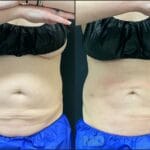Welcoming a newborn is a joyous occasion, but it can also bring moments of concern. One common worry for new parents is infant jaundice, recognizable by a yellowish tint to the baby’s skin and eyes. This occurs due to a buildup of bilirubin, a natural byproduct produced when the body breaks down old red blood cells. While typically harmless, elevated bilirubin levels sometimes require treatment. Phototherapy is a common and effective treatment, and one convenient option is the Biliblanket. This article provides a comprehensive guide to understanding and using Biliblankets for at-home phototherapy.
Understanding the Biliblanket
Dealing with infant jaundice can be stressful, but thankfully, advancements like the Biliblanket offer more comfortable treatment options. What exactly is a Biliblanket? It’s a portable phototherapy device resembling a softly lit blanket, designed to deliver continuous blue light therapy. This special blue light helps break down bilirubin into a form that your baby’s body can easily eliminate. It’s a gentle and effective way to support your baby’s natural processes. Calculate your adrenal function with our cutting-edge adrenal washout calculator. Take control of your hormone levels and improve your overall health today!
Advantages of Biliblanket Therapy
Biliblankets offer several advantages over traditional phototherapy methods. One key benefit is the potential for reduced hospital stays, allowing for precious bonding time at home in a familiar environment. This can significantly reduce stress and anxiety for both parents and baby. The revolutionary amnisure test unlocks the secrets of your amniotic fluid. Gain peace of mind and ensure the well-being of your pregnancy.
Another advantage is convenience. Administering phototherapy at home eliminates the need for frequent trips to the hospital, easing the burden on families, especially those with multiple children or transportation challenges.
Furthermore, Biliblankets deliver targeted phototherapy directly to your baby’s skin. This focused approach may minimize potential side effects sometimes associated with traditional overhead phototherapy units.
Considerations for Biliblanket Use
As with any medical device, there are factors to consider when using a Biliblanket. Cost is one, though it’s important to weigh the potential long-term savings from reduced hospital stays against the upfront expense. Checking with your insurance provider about coverage is recommended.
Medical supervision is crucial. Your doctor will provide guidance on proper usage, including eye protection during treatment and monitoring your baby’s progress. Follow-up appointments to check bilirubin levels and ensure treatment effectiveness are essential.
Types and Selection of Biliblankets
Several types of Biliblankets are available. The GE BiliBlanket is often considered the original and is sometimes used generically. The BiliTouch by Motif Medical, which utilizes LED technology, is another popular choice. Your healthcare provider can help determine the most appropriate type for your baby’s needs. Factors like your baby’s size and specific condition will likely guide the decision. Features such as portability, light output, cost, and insurance coverage also play a role. Your doctor can help navigate these considerations.
Biliblanket vs. Traditional Phototherapy
Both Biliblankets and traditional phototherapy are effective in treating jaundice. However, Biliblankets offer the distinct advantage of portability and home use, minimizing disruptions to family routines. They can also provide a more comfortable and less invasive experience for your baby.
Using a Biliblanket: A Step-by-Step Guide
- Connect the power source: Plug the Biliblanket’s power supply into a safe and accessible outlet.
- Position the baby: Lay your baby on the Biliblanket pad, ensuring their skin is in direct contact with the fiber-optic surface. A thin sheet can be placed over the pad for comfort and hygiene.
- Apply eye protection: Secure the provided eye patches or coverings over your baby’s eyes to shield them from the blue light. This is critically important.
- Monitor temperature: Regularly check your baby’s temperature to prevent overheating. The Biliblanket itself doesn’t produce significant heat, but keeping the baby covered can sometimes lead to warmth.
- Follow the prescribed schedule: Adhere to your doctor’s instructions regarding the duration and frequency of treatment sessions. This might involve continuous use with breaks only for feeding and diaper changes.
- Observe for changes: Monitor your baby’s skin for any unusual changes or reactions, and report any concerns to your doctor promptly.
Your doctor will provide detailed instructions tailored to your baby’s individual needs, including how to position your baby, how long each session should last, and how often to use the device. Protecting your baby’s eyes during treatment is paramount.
The Future of Biliblanket Technology
Research is ongoing to refine and improve phototherapy. Scientists are exploring advancements in LED light therapy, and some are investigating integrating Biliblankets with smart home devices for enhanced control and monitoring. As technology evolves, we can anticipate even more user-friendly and effective options for treating infant jaundice at home.
BiliSoft vs. Biliblanket: Understanding the Differences
While both BiliSoft and Biliblanket are phototherapy devices for treating neonatal jaundice, they differ in their technology and application. BiliSoft uses both LED and fiber-optic technology, offering versatile placement options in various care settings, from incubators to a caregiver’s arms. It also allows for swaddling the baby with the pad. Biliblanket primarily employs fiber-optic technology in a wrap-around blanket design, mainly for home use. The choice between the two depends on factors such as the severity of jaundice, the baby’s gestational age, the care environment, and physician recommendations.
Frequently Asked Questions about Biliblankets
Q: How long can a baby stay on a Biliblanket?
A: The duration varies depending on the severity of the jaundice and your doctor’s recommendations. Some babies may require nearly continuous treatment (around 24 hours a day with breaks for feeding and diaper changes), while others might need shorter periods. Regular blood tests will help monitor bilirubin levels and guide the treatment timeline.
Q: What are the potential side effects of Biliblanket use?
A: Biliblankets are generally safe, but some babies might experience mild and temporary side effects like loose stools or a slight skin rash. It’s important to discuss any concerns with your doctor.
Q: Are Biliblankets covered by insurance?
A: Insurance coverage for Biliblankets varies. It’s recommended to check with your insurance provider to understand your specific coverage.
It’s crucial to remember that medical knowledge is constantly evolving. While current information suggests Biliblankets are a safe and effective treatment for infant jaundice, ongoing research will continue to enhance our understanding and improve treatment methods. Always consult your doctor for the most up-to-date advice and guidance tailored to your baby’s specific needs. They are your best resource for navigating this important aspect of newborn care.
- SYBAU See You Baby Meaning: Gen Z Slang Evolves - July 1, 2025
- Unlock Your Inner Youth: Lifestyle Secrets for a Vibrant Life - July 1, 2025
- Decode SYBAU Meaning: Gen Z Slang Explained - July 1, 2025






1 thought on “Biliblanket: Your Guide to Home Phototherapy for Infant Jaundice”
Comments are closed.